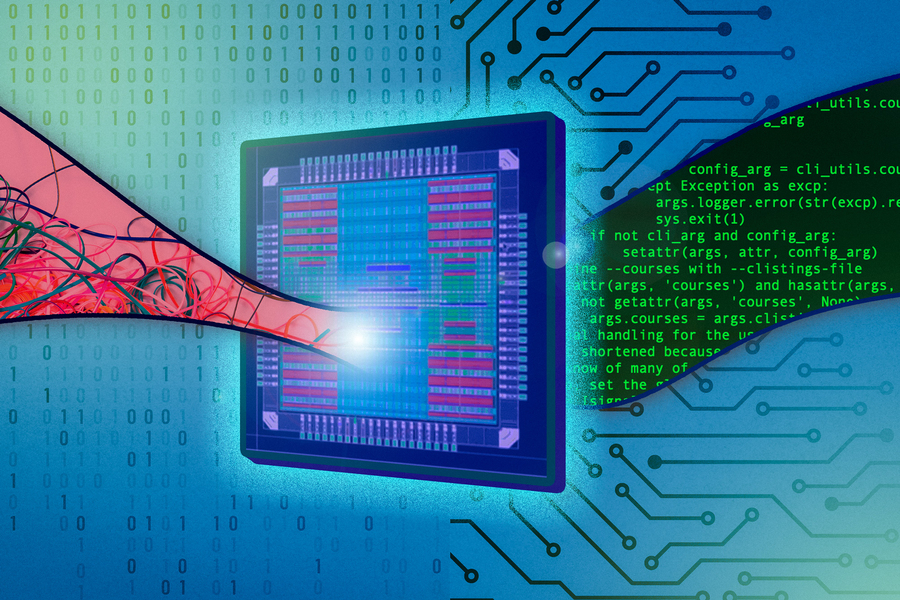MIT News September 9, 2021
An international team of researchers (USA – MIT, Boston University, Ireland) has created the first silicon chip which, unlike most error correcting codes, is able to decode any code, regardless of its structure, with maximum accuracy, using a universal decoding algorithm called Guessing Random Additive Noise Decoding (GRAND). GRAND works by guessing the noise that affected the message and uses the noise pattern to deduce the original information. It generates a series of noise sequences in the order they are likely to occur, subtracts them from the received data, and checks to see if the resulting codeword is in a codebook. While the noise appears random in nature, it has a probabilistic structure that allows the algorithm to guess what it might be. The GRAND chip uses a three-tiered structure, starting with the simplest possible solutions in the first stage and working up to longer and more complex noise patterns in the two subsequent stages. Each stage operates independently, which increases the throughput of the system and saves power. It is designed to switch seamlessly between two codebooks. It contains two static random-access memory chips, one that can crack codewords, while the other loads a new codebook and then switches to decoding without any downtime. In tests GRAND could effectively decode any moderate redundancy code up to 128 bits in length, with only about a microsecond of latency. GRAND enables increased efficiency that could have applications in augmented and virtual reality, gaming, 5G networks…read more.

A new silicon chip can decode any error-correcting code through the use of a novel algorithm known as Guessing Random Additive Noise Decoding (GRAND). Credits: Image: Jose-Luis Olivares, MIT